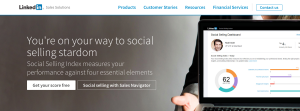
Unless you’re a nonprofit, you’re in business to make money. But, too often, CRMs are undermining that goal. While they were put into place to drive revenue, they sometimes do just the opposite by hindering productivity, performance, and even morale. Meanwhile, the opportunities they were meant to capture slip away.
Don’t let this happen to you. Make sure your CRM is doing what it’s supposed to. Watch for these red flags:
- Your business development team views your CRM only as a performance-monitoring tool. They only log into it to enter data to please the higher-ups. They rarely use it to inform relationship-building with clients, if at all.
Ray Beste, a partner with Sikich, a top 100 accounting firm, notes that it’s a bad sign “if you see that opportunities are only going in shortly before being closed as won versus going in when discovered.”
- It isn’t aligned with your business development process. It asks a multitude of questions that have little to do with moving the client to the next step in the sales process. Instead of advancing sales, it serves as an information-gathering tool for other departments such as operations, marketing or finance.
- It can only be manually updated. That eats up more than a month of time annually, considering the typical business development professional spends 5.5 hours a week entering data into CRMs that must be manually updated. On average, this costs companies $ 13,200 annually per CRM user. Furthermore, being reduced to a data-entry clerk can be discouraging for professionals who would much rather be selling.
- Its data isn’t easily accessible. Do your sales professionals have to jump through hoops to extract data from the CRM? They’re less likely to take advantage of the knowledge it contains if they have to login, page through screen after screen, and then interpret what they find. Remember, sales professionals aren’t data entry clerks, and most probably aren’t data analysts, either.
- It isn’t synchronized with email or social media. That means the only email exchanges and social media updates that will be captured are those that sales professionals take time to enter into the CRM. The result is gaps in data and inaccurate information, which can render the CRM useless.
- It’s incorrectly tracking billable services. A sure sign of this is when clients pay for a service that you haven’t even invoiced. This can happen in a large contract that includes multiple quotes .
If you see any of these red flags in your organization, chances are, your CRM is leaking or eating revenue. Fortunately, the fix is simple. You don’t need to get a new CRM system, you just need a solution that can instantly resolve the issues we’ve outlined. That’s CRM automation. It works with your existing CRM system to:
- Save significant time. CRM automation makes manual data entry obsolete. It automatically recognizes activities, from both internal and external sources, that need to be included in the CRM system and instantly records them.
- Make data easy to use and act on. Your business development professionals don’t even need to log into the CRM or navigate through it to get the information they need to move a relationship forward. Instead, customer details are delivered wherever they are – on their laptop, mobile device, or tablet. Plus, it’s packaged in the format they prefer, such as Word or Excel, so they can effortlessly see client issues and opportunities, including:
- Internal communication
- Agreements
- Open opportunities
- Client relationships within the organization
- The strength of those relationships
- Executive alignment within the client’s organization, and much more
- Internal communication
- Improve data accuracy. Because CRM automation eliminates the need for manual data entry, human error and gaps that come with it are eliminated, too. You can rest assured the information CRM automation provides is complete, up-to-the-second, and accurate.
- Capture and report on relationships. With CRM automation, all of your company’s important contacts are automatically synced and recorded to your CRM, so staying on top of relationship-driven business is simple.
- Elevate client service. By instantly transforming data into actionable insights, CRM automation can easily provide business development professionals the details they need to engage clients more effectively by proactively addressing their needs. In fact, it can provide unexpected insights that point to new opportunities. To achieve this without CRM automation would be extremely challenging, if not impossible.
- Ensure you invoice for all of your time. Introhive helps you capture all client activities so you know that you’re billing for every service.
CRM automation ensures your CRM does what it’s supposed to — make the lives of your business development professionals easier so they have the time, resources and energy to do what they do best: build relationships and close deals. Find out more about what CRM automation can do.
Business & Finance Articles on Business 2 Community(47)
Report Post







